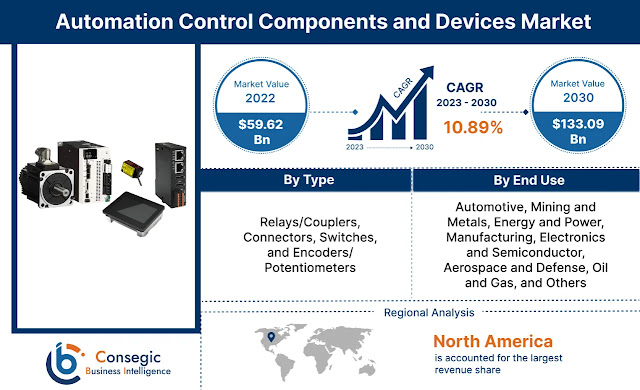Heating Up: Inside the Residential Furnace Market’s Evolution and Opportunity
The Residential Furnace Market is experiencing a steady, data-driven expansion. Valued at USD 7.60 billion in 2024, the market is projected to reach USD 7.75 billion in 2025 and surge past USD 10.21 billion by 2032, expanding at a Compound Annual Growth Rate (CAGR) of 3.8% from 2025 to 2032.
This growth signals more than just rising demand—it reflects deep shifts in how consumers heat their homes, the energy standards governing manufacturers, and the innovation shaping HVAC technologies globally.
1. Opening Insight (Hook)
As global temperatures fluctuate and energy efficiency becomes non-negotiable, the Residential Furnace Market is quietly emerging as a cornerstone of sustainable home infrastructure. A shift from traditional systems to smarter, greener, and more adaptive heating solutions is underway—backed by a multibillion-dollar trajectory.
Whether you're an investor tracking infrastructure portfolios or a decision-maker in home improvement supply chains, this market demands a closer look.
2. Market Evolution & Significance
Residential furnaces—once seen as utilitarian home fixtures—are now at the center of environmental and technological transformation. In the past decade, advancements in energy-efficient heating, the transition from fossil fuels to electricity, and smart thermostat integration have redefined consumer expectations.
Legislation around carbon emissions, incentives for Energy Star-rated appliances, and government-backed retrofitting programs are pushing homeowners toward high-efficiency units. Simultaneously, the rise of connected homes and IoT-enabled HVAC systems is unlocking new levels of control, diagnostics, and energy conservation.
What was once a purely mechanical market is now increasingly digital—and globally strategic.
3. Market Segmentation
To understand this market’s breadth, it's essential to examine how it's structured. The segmentation provides a lens into consumer behavior, supply chain dynamics, and technical differentiation.
By Fuel Type
-
Gas
-
Electric
-
Oil
-
Others
By Installation Type
-
New Installation
-
Replacement Installation
By Distribution Channel
-
Direct Sales
-
HVAC Contractors & Installers
-
Retail (Home Improvement Stores)
-
Online Retail
By Efficiency Rating
-
Standard Efficiency
-
Mid-Efficiency
-
High Efficiency
-
Ultra-High Efficiency
The replacement market, in particular, is a key growth driver. Aging infrastructure across North America and Europe is creating a strong upgrade cycle, while new installations remain steady in fast-urbanizing regions like Southeast Asia and Latin America.
4. Key Industry Players
-
Daikin Industries, Ltd. (Japan)
-
Bosch Thermotechnology (Germany)
-
Fujitsu General Limited (Japan)
-
Mitsubishi Electric Corporation (Japan)
-
Viessmann Group (Germany)
-
Vaillant Group (Germany)
-
Wolf Steel Ltd. (Napoleon) (Canada)
-
Groupe Atlantic (France)
-
Baxi Heating (United Kingdom)
-
Ferroli S.p.A. (Italy)
5. Recent Developments & Future Outlook
Recent years have seen a strategic pivot toward low-emission, smart-enabled systems. Ultra-high-efficiency furnaces equipped with variable-speed blowers, Wi-Fi integration, and remote diagnostics are fast becoming industry standards.
M&A activity is also intensifying. Manufacturers are consolidating to access regional distribution networks, proprietary technologies, and energy compliance expertise. Meanwhile, governments in regions like North America and the EU are investing in green housing projects, often tied to HVAC upgrade incentives.
Looking ahead, the market is primed for:
-
Growth in smart home adoption, which will push furnace integration with broader energy management systems.
-
AI-driven HVAC systems, optimizing heating based on real-time occupancy and weather data.
-
A shift toward electrification, especially in countries moving away from natural gas.
As environmental targets become non-negotiable for cities and nations alike, the humble furnace is becoming a key enabler of low-carbon living.
6. Regional Analysis of Residential Furnace Market Market
North America
A mature yet dynamic market driven by replacement demand and energy regulation. U.S. consumers are highly responsive to energy efficiency labels, and retrofitting is a major trend in older housing stock.
Europe
Europe’s ambitious climate goals and decarbonization efforts are reshaping furnace design. Natural gas phaseouts in certain regions are accelerating the move to electric heat pumps and hybrid systems, influencing furnace upgrades significantly.
Asia Pacific
This region is witnessing strong residential construction activity, especially in urban India, China, and Southeast Asia. As living standards rise and winters grow harsher in some regions, the demand for economical and compact furnace units is growing steadily.
Latin America and Middle East
While smaller in size, these markets are seeing incremental growth due to urbanization and middle-class expansion. Regional policies promoting energy conservation may spur adoption of mid- and high-efficiency models in the coming years.
Conclusion
The Residential Furnace Market is heating up—both literally and figuratively. It's no longer just about warm homes; it's about intelligent energy use, long-term cost efficiency, and environmental responsibility.
For B2B leaders, OEMs, and investors, this market represents a blend of stable returns and innovation-led potential. As regulatory pressure, climate goals, and consumer expectations evolve, the residential furnace is emerging not just as a necessity—but as a strategic asset in the smart, sustainable home of the future.




Comments
Post a Comment